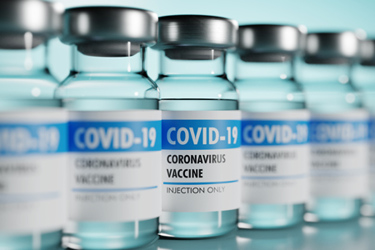Clues To Mapping A Crisis-Ready Tech Transfer Playbook
A conversation with Nassim Farrokhzad, AstraZeneca

COVID-19 forced biopharmaceutical companies to reimagine how tech transfer gets done — not in years or months, but in weeks.
The pressure was especially acute in the race to manufacture and distribute vaccines at unprecedented speed and scale.
The lessons learned during those chaotic months have helped define what agility, lean execution, and real-time collaboration look like in practice. Looking back, there are notable insights that can offer a road map for how the industry might handle the next global health emergency — and what still needs to change.
Nassim Farrokhzad is the drug product technology lead at AstraZeneca who helped construct the company’s rapid response. She’s scheduled to share some of her insights and lessons learned during the pandemic at the International Society for Pharmaceutical Engineering’s 2025 ISPE Biotechnology Conference in June.
She offered to give us a preview and answer some questions about pandemic readiness. Here’s what she told us.
Can you explain how agile and lean principles translate into real-world decisions during a tech transfer — especially under the pressure of a public health emergency.
The COVID pandemic was unprecedented in so many ways. Our lean approach was anchored in three core principles: people, process, and performance. We structured teams and created a comprehensive support system to empower our people to execute what was likely the most significant technology transfer project of their careers. To ensure success, we built a robust infrastructure that enabled rapid decision-making at the appropriate levels and provided quick access to critical information.
Lean principles rely on standardization and the development of optimized business processes. While we had already established many lean practices prior to the pandemic, we quickly recognized the need to create a new set of tools and workflows tailored specifically to the urgency and scale of this project. The goal was clear, and everyone was fully committed to achieving it. In place of traditional gemba walks, we fostered open, real-time discussions and troubleshooting with our manufacturing partners. Knowledge and information flowed freely between parties, without firewalls or silos.
Finally, we implemented sophisticated digital tools that automatically integrated updates across workstreams. This seamless connectivity ensured effective communication, rapid alignment, and real-time visibility across the program and with leadership.
What elements of tech transfer did you find most vulnerable to bottlenecks during the COVID response? Can you share any examples of how you addressed them?
Material readiness, such as format parts or single-use components, was the most vulnerable aspect of tech transfer under those conditions. The biggest bottleneck we consistently faced was securing materials at the right time. At one point, the lead time for certain single-use components reached as long as 24 months.
To mitigate this challenge, one of our first actions when onboarding a new manufacturing site was to place material orders immediately. As we had globally aligned process designs and strong vendor relationships, many of our single-use systems were effectively templated, allowing for quick adaptation to site-specific nuances. We also relied heavily on our network: in some instances, sites with no prior business ties lent components or materials to one another to avoid production delays.
Were there moments where you had to push for regulatory flexibility to meet the urgency of the moment? If so, how were they managed?
One silver lining of the global health emergency was the spirit of true collaboration between pharmaceutical companies and regulatory agencies. We worked together more like scientific peers united by a shared mission, rather than following the typical authority-versus-industry dynamic. The urgency of delivering safe, high-quality doses was the common goal, and this alignment was reflected in the frequency and openness of our interactions.
We held regular meetings with health authorities to align on strategy and prioritize data review. In many cases, decisions or guidance were provided either during the meeting or within days. When project-specific circumstances required flexibility, we proactively raised those issues early and sought the agency's input and guidance.
In essence, we didn’t need to "push" for regulatory flexibility, as it was already part of the collaborative mindset. The focus was always on how to safely and effectively bring medicines to patients under extraordinary conditions.
How did you ensure product quality wasn’t compromised given the compressed timelines and potential gaps in standard process validation?
We operated, and continue to operate, under strict quality standards that are nonnegotiable. While we had to take several business risks to meet the urgency of the moment, it was always clear that product quality was not one of them.
Even when we had to adapt standard process validation approaches, such as using concurrent validation in place of prospective validation, we ensured that the total data package met the same rigorous standards expected under normal licensure conditions. In other words, while the path may have changed, the bar for data integrity and product quality remained just as high.
To enable accelerated timelines without compromising quality, we implemented additional layers of testing and oversight. This allowed us to move quickly while maintaining full confidence in the safety, efficacy, and consistency of the product.
The COVID response revealed as many inefficiencies as innovations. Are we ready for the next pandemic?
COVID taught us valuable lessons about agility and responsiveness, and how the pharmaceutical industry and its ecosystem, including universities, manufacturers, suppliers, service providers, and government agencies, can collaborate to tackle a public health emergency. At AstraZeneca, we are applying some of the lessons learned during the COVID years by streamlining our manufacturing technologies and submission workflows. I am confident that if another pandemic were to strike tomorrow, our industry, and society at large, would respond with the same urgency and commitment.
That said, in order, to respond more efficiently and effectively to future public health emergencies, we need a globally scalable infrastructure and a standardized playbook that can be activated across jurisdictions and organizations. Currently, our industry is highly customized, each product and company operate under their unique systems. While that works under normal conditions, it's a major barrier in crisis situations. Greater standardization is essential to ensure that materials, equipment, and manufacturing capacity can be rapidly deployed when needed.
From a regulatory perspective, streamlining data review and approvals, for example, by adopting a single global data set and mutual recognition of approvals, could significantly reduce delays and resource strain. Similarly, preestablishing supply and distribution networks, including globally recognized preapproved testing sites, has the potential to drastically improve speed and patient access during emergencies.
In short, we must design and invest in an agile, global framework now, or we risk repeating the same pitfalls when the next crisis arises.
About The Expert:
 Nassim Farrokhzad oversees biologics drug product technology at AstraZeneca, with a focus on AI-driven initiatives to streamline and standardize global technical operations. She has led multi-billion-dollar product portfolios, accelerated regulatory approvals (NDAs and BLAs), and pioneered digital medicine manufacturing. Nassim is recognized for her contributions to quality-by-design practices and risk-based validation strategies.
Nassim Farrokhzad oversees biologics drug product technology at AstraZeneca, with a focus on AI-driven initiatives to streamline and standardize global technical operations. She has led multi-billion-dollar product portfolios, accelerated regulatory approvals (NDAs and BLAs), and pioneered digital medicine manufacturing. Nassim is recognized for her contributions to quality-by-design practices and risk-based validation strategies.
